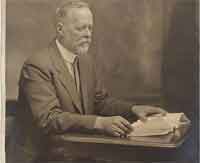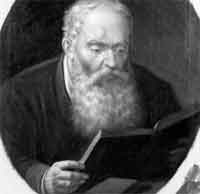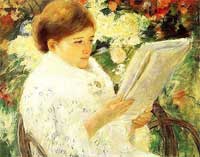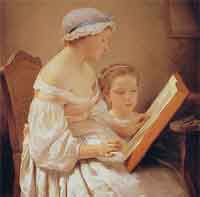
Introduction
“The Lion King,” Disney’s beloved animated masterpiece, and William Shakespeare’s timeless tragedy, “Hamlet,” may seem worlds apart in terms of genre and setting. However, beneath the surface, these two works share profound similarities that have captivated audiences for generations. In this 1500-word exploration, we will uncover the shared themes, character parallels, and narrative elements that connect the African savanna of “The Lion King” to the Danish court of “Hamlet,” shedding light on the enduring appeal of these stories.
1. The Primal Themes of Revenge and Regicide
The Lion King: Simba’s journey is driven by the need for revenge after his father, Mufasa, is killed by Scar. The core theme of regicide is central to the plot.
Hamlet: “Hamlet” centers around Prince Hamlet’s quest for revenge against his uncle, King Claudius, who has murdered Hamlet’s father, King Hamlet. Regicide is a core element of the play.
2. The Influence of Ghostly Figures
The Lion King: Mufasa appears to Simba as a spirit from beyond the grave, delivering guidance and wisdom to his son.
Hamlet: The ghost of King Hamlet appears to Prince Hamlet, revealing the truth about his murder and urging him to seek revenge.
3. The Role of the Protagonists as Reluctant Leaders
The Lion King: Simba is initially reluctant to assume his role as king, grappling with feelings of inadequacy and guilt.
Hamlet: Prince Hamlet is hesitant to take on the responsibility of avenging his father’s murder, and his internal conflict is a central aspect of the play.
4. The Importance of Father-Son Relationships
The Lion King: The relationship between Mufasa and Simba is pivotal, with Mufasa serving as a wise and caring father figure.
Hamlet: The strained relationship between King Hamlet and Prince Hamlet, as well as the influence of King Claudius as a surrogate father, drives the narrative.
5. The Theme of Betrayal Within the Family
The Lion King: Scar’s betrayal of Mufasa and Simba is a central element of the story, leading to Simba’s exile.
Hamlet: Claudius’s betrayal of King Hamlet and his marriage to Queen Gertrude creates tension within the royal family.
6. The Impact of Power Struggles
The Lion King: Scar’s usurpation of the throne leads to a power struggle within the Pride Lands.
Hamlet: Claudius’s seizure of power and the subsequent political intrigue contribute to the play’s tension.
7. The Role of Comic Relief Characters
The Lion King: Timon and Pumbaa provide comic relief, offering humor in contrast to the darker themes.
Hamlet: The characters of Rosencrantz and Guildenstern serve a similar purpose in “Hamlet.”
8. Themes of Guilt and Redemption
The Lion King: Simba grapples with guilt over his perceived role in Mufasa’s death and ultimately seeks redemption.
Hamlet: Hamlet’s contemplation of guilt and his pursuit of justice for his father are central to the play.
9. The Theme of the Circle of Life and Death
The Lion King: The concept of the Circle of Life is central to the film, emphasizing the cyclical nature of existence.
Hamlet: Shakespeare’s play explores the inevitability of death and the idea that all things must come to an end.
10. The Triumph of Good Over Evil
The Lion King: Simba’s return and victory over Scar restore balance and goodness to the Pride Lands.
Hamlet: Hamlet’s quest for justice ultimately leads to a resolution, restoring order to the Danish court.
Here’s a comparison table highlighting the similarities between “The Lion King” and Shakespeare’s “Hamlet”:
| “The Lion King” | “Hamlet” | |
| Revenge and Regicide | Simba seeks revenge for Mufasa’s death and the regicide committed by Scar. | Hamlet’s quest for revenge is driven by King Claudius’s regicide of King Hamlet. |
| Influence of Ghostly Figures | Mufasa’s spirit appears to Simba, offering guidance and wisdom. | King Hamlet’s ghost reveals the truth about his murder and urges Hamlet to seek revenge. |
| Reluctant Leaders | Simba is initially reluctant to assume his role as king. | Hamlet is hesitant to take on the responsibility of avenging his father’s murder. |
| Father-Son Relationships | Mufasa serves as a wise and caring father figure to Simba. | The strained relationship between King Hamlet and Prince Hamlet is central. |
| Betrayal Within the Family | Scar’s betrayal of Mufasa and Simba drives the plot. | Claudius’s betrayal of King Hamlet and marriage to Queen Gertrude creates tension. |
| Power Struggles | Scar’s usurpation of the throne leads to a power struggle within the Pride Lands. | Claudius’s seizure of power and political intrigue contribute to tension. |
| Comic Relief Characters | Timon and Pumbaa provide comic relief, adding humor to the story. | Rosencrantz and Guildenstern serve a similar purpose, offering comic relief. |
| Themes of Guilt and Redemption | Simba grapples with guilt over Mufasa’s death and seeks redemption. | Hamlet’s contemplation of guilt and pursuit of justice are central. |
| Circle of Life and Death | The Circle of Life concept emphasizes the cyclical nature of existence. | The play explores the inevitability of death and the passage of time. |
| Triumph of Good Over Evil | Simba’s return and victory over Scar restore goodness to the Pride Lands. | Hamlet’s quest for justice leads to resolution in the Danish court. |
These similarities demonstrate the shared thematic elements and narrative parallels between “The Lion King” and “Hamlet,” showcasing how universal themes of revenge, betrayal, family, and the human condition transcend different storytelling mediums and settings.
Conclusion
“The Lion King” and “Hamlet” may occupy different mediums and settings—one animated and set in the African savanna, the other a classic play set in the Danish royal court—but their shared themes of revenge, betrayal, family, and the human condition make them remarkably similar at their core. These enduring narratives continue to resonate with audiences, reminding us that stories of love, loss, and redemption are universal, whether told through the eyes of lions or the words of Shakespeare.
Frequently Asked Questions (FAQ) About the Similarities Between “The Lion King” and “Hamlet”
1. Are “The Lion King” and “Hamlet” directly related or inspired by each other?
- “The Lion King” is not a direct adaptation of “Hamlet,” but it draws on similar themes and character dynamics. It is considered to be influenced by Shakespeare’s play.
2. How do the characters in “The Lion King” compare to those in “Hamlet”?
- While “The Lion King” features animal characters and “Hamlet” centers on human characters, there are clear parallels. For example, Simba and Hamlet both experience the loss of a father figure and seek revenge.
3. What is the significance of the Circle of Life in “The Lion King” compared to the theme of death in “Hamlet”?
- “The Lion King” emphasizes the Circle of Life, highlighting the cyclical nature of existence and renewal. In “Hamlet,” the theme of death is explored more directly, with characters facing mortality and the consequences of murder.
4. How do the themes of betrayal and power struggles manifest in both works?
- Betrayal is central in both stories. In “The Lion King,” Scar’s betrayal of Mufasa drives the plot. In “Hamlet,” Claudius’s betrayal of King Hamlet and the power struggles that ensue are central to the play’s tension.
5. Are there other Shakespearean influences in “The Lion King”?
- Yes, “The Lion King” also draws inspiration from Shakespeare’s “Macbeth” in its portrayal of ambition and power.
6. How do the themes of guilt and redemption play out in both stories?
- Both Simba and Hamlet grapple with guilt—Simba over Mufasa’s death and Hamlet over his father’s murder. Their quests for redemption are central to their character arcs.
7. Why are these similarities between “The Lion King” and “Hamlet” significant?
- These similarities illustrate the enduring power of universal themes and storytelling archetypes. They allow audiences to connect with characters and narratives across different cultures, settings, and time periods.
8. What are some other works that draw inspiration from Shakespearean plays?
- Many works of literature, film, and theater have drawn inspiration from Shakespearean plays. Some examples include “West Side Story” (inspired by “Romeo and Juliet”), “The Lion in Winter” (inspired by historical figures from Shakespeare’s plays), and “She’s the Man” (a modern adaptation of “Twelfth Night”).
These FAQs highlight the intriguing connections between “The Lion King” and “Hamlet,” shedding light on how classic themes and storytelling elements continue to resonate with audiences across different forms of media.












Leave a Reply